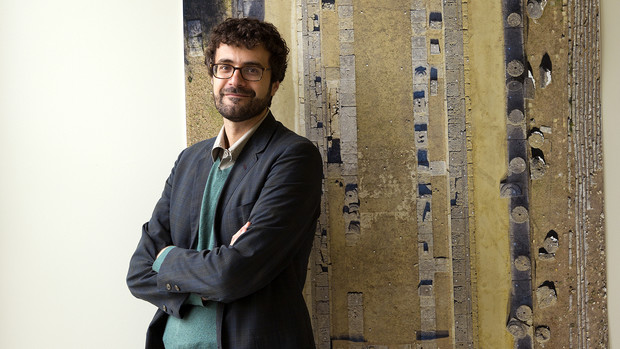
School of Art, Art History & Design Assistant Professor of Art History Philip Sapirstein is among two University of Nebraska–Lincoln faculty who earned fellowships from the National Endowment for the Humanities, one of the most prestigious honors in the discipline.
Sapirstein, along with Melissa Homestad, professor of English and program faculty of women's and gender studies, were among the eight percent of applicants to receive NEH fellowships this year.
Sapirstein received an NEH-Mellon Fellowship for Digital Publication, a program that supports individuals pursuing research projects requiring digital expression and digital publication. It is jointly funded by NEH and The Andrew W. Mellon Foundation.
The NEH’s broader mission is to promote excellence in the humanities and communicate history lessons to the general public.
As an NEH-Mellon fellow, architectural historian Sapirstein will design an interactive virtual museum of the temple of Hera at Olympia, a monument critical to understanding early Greek architecture.
The website culminates Sapirstein’s four years of fieldwork at the Hera temple, one of the best-preserved temples in Greece. The site will be the only modern, comprehensive architectural analysis of the temple, offering visitors three-dimensional models, publications, images, links and archival records.
It also is one of the first attempts to provide researchers, students and the public with easy access to 3-D data that is massive, detailed and difficult to load even on fast computers.
“Disseminating digital data is a common challenge for researchers working with 3-D scans of cultural heritage,” Sapirstein said. “I’m developing methods that could be adopted for exploring any historical architecture, and for other uses.”
He’s developed a “2.5-dimensional” approach that circumvents the lengthy download times and limited flexibility of full-resolution data. By converting his 3-D models to two-dimensional images that reflect different layers of the monument’s depth, visitors will be able to explore the temple, starting with the exterior and moving inward.
The website will unveil Sapirstein’s latest finding that the temple at Hera was an international collaboration among builders from across the Greek world, which is fitting given the location’s role as the birthplace of the ancient Olympic games. He said it is difficult to present new arguments like this in a traditional publication that relies on published illustrations.
“An interactive website is much better suited for enabling visitors to challenge my ideas, study the monument flexibly and answer their own questions about the temple,” he said. “This promotes academic transparency beyond what can typically be attained in print.”
The website will be associated with the university’s Center for Digital Research in the Humanities, where Sapirstein is a faculty fellow.
--Tiffany Lee, Research and Economic Development